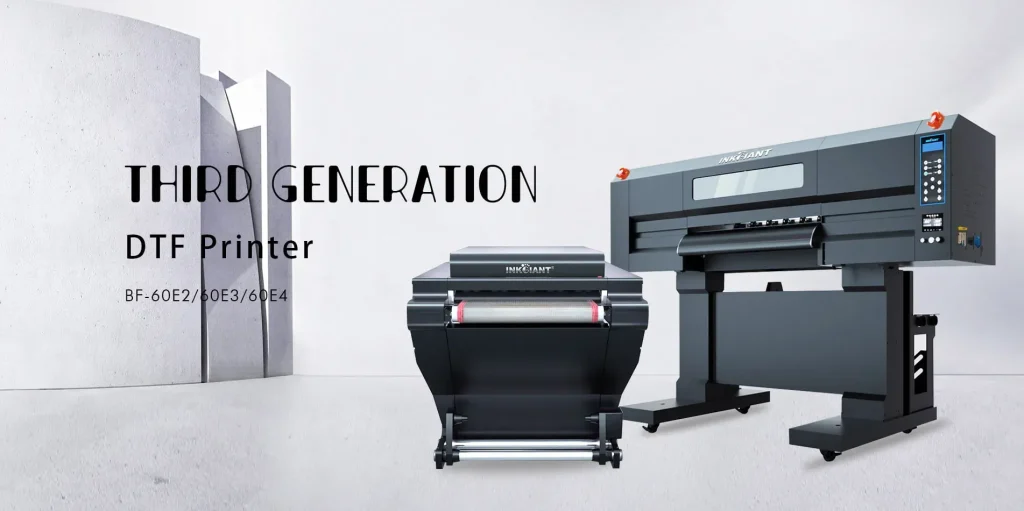DTF technology, or Direct-to-Film printing, is revolutionizing the printing industry, offering a modern solution for custom garment printing. This innovative method not only delivers vibrant and durable prints but also promotes sustainable printing technology that minimizes environmental impact. As businesses strive to stay ahead of competition, DTF printing advantages such as versatility, cost-effectiveness, and high-quality outputs are making it an irresistible choice. The rise of DTF technology signifies a broader trend in printing industry innovations that cater to the growing demand for personalization and eco-friendliness. In this article, we will explore how DTF technology is reshaping the landscape of fabric printing and discuss its potential for future growth.
Known as Direct-to-Film printing, this cutting-edge method represents a significant shift in the textile printing domain. By transferring designs onto a carefully prepared film before applying them to garments, this technique enhances the scope of custom apparel manufacturing. The rising popularity of this printing solution aligns with a broader movement towards environmentally conscious practices in the printing sector. Innovations in this area promise not only stunning imagery but also cater to consumer desires for quality and customization. Throughout this exploration, we will uncover how DTF technology stands at the forefront of transforming conventional printing methods into a more versatile and sustainable future.
The Emergence of Direct-to-Film Printing
In recent years, the printing industry has experienced a drastic transformation, primarily driven by the emergence of Direct-to-Film (DTF) printing technology. This innovative approach to garment and textile printing uses a unique process to create high-quality prints that are both vibrant and durable. Unlike traditional methods, DTF technology allows businesses to efficiently print designs onto a film, which can then be heat-pressed onto various fabric types. This flexibility is a key factor that has contributed to the widespread adoption of DTF technology across multiple sectors, including fashion and custom merchandise.
The rise of DTF printing is not just a result of its technical advantages, but also reflects a broader trend towards sustainable practices in the printing industry. As brands and consumers push for environmentally friendly solutions, DTF technology stands out due to its lower water usage and reduced waste compared to conventional techniques. This sustainability aspect has made DTF an increasingly appealing choice for businesses looking to align their operations with eco-conscious consumer preferences.
Frequently Asked Questions
What is DTF Technology and how does it work?
DTF Technology, or Direct-to-Film printing, is an innovative process that involves printing designs onto a specialized film which is then heat-pressed onto various fabrics. This method allows for high-quality prints on different materials such as cotton and polyester, offering versatility compared to traditional printing methods. DTF technology is particularly popular for custom garment printing due to its adaptability and efficiency.
What are the main advantages of using DTF printing technology?
The key advantages of DTF printing technology include its versatility in printing on multiple fabrics, cost-effectiveness for small and medium businesses, enhanced print quality with vibrant colors and precise details, and its eco-friendly approach that uses less water and generates minimal waste. These DTF technology advantages make it a strong choice in the sustainable printing technology landscape.
How does DTF Technology compare to traditional printing methods?
Compared to traditional methods like screen printing, DTF Technology offers greater flexibility in material selection, lower setup costs, and higher print quality. While screen printing is often limited to specific fabrics, DTF can seamlessly print on various substrates, making it ideal for custom garment printing and facilitating a more efficient production process in the printing industry.
Is DTF printing a sustainable printing technology?
Yes, DTF printing is considered a sustainable printing technology due to its lower water consumption and reduced waste generation compared to traditional screen printing. As the demand for eco-friendly practices increases, adopting DTF technology allows businesses to align with sustainability goals while still delivering high-quality printed products.
What industries can benefit from DTF technology?
DTF Technology is beneficial across a variety of industries, including fashion, promotional products, and home decor. Its versatility in custom garment printing appeals to businesses looking to enhance their product offerings and meet diverse consumer demands. As the printing industry continues to innovate, the applications of DTF technology are likely to expand further.
What is the future of DTF technology in the printing industry?
The future of DTF Technology is promising, with significant growth potential expected in the coming years. The DTF printing market is projected to grow at a compound annual growth rate (CAGR) of over 10% from 2023 to 2028, driven by rising demand for high-quality, customized products. Ongoing advancements in DTF technology, such as improved ink formulations and automated printing processes, will further enhance its capabilities, making it a vital part of printing industry innovations.
| Key Point | Description |
|---|---|
| Versatility in Printing Materials | DTF can print on various fabrics seamlessly, unlike traditional methods limited to certain types. |
| Cost-Effectiveness | Lower setup costs and minimal maintenance appeal to startups and small businesses, enabling affordable production. |
| Enhanced Print Quality | Produces high-quality prints with vibrant colors and excellent washability, meeting consumer demands for durability. |
| Sustainability | DTF uses less water and generates less waste, aligning with eco-friendly practices sought by consumers. |
| Technological Innovations | Advancements like water-based inks and automated features improve print quality and production timelines. |
| Market Growth Potential | The DTF market is expected to grow significantly, driven by demand in fashion, promotional products, and home decor. |
Summary
DTF Technology is at the forefront of revolutionizing the printing industry through its innovative approach that combines high-quality output with sustainability. This technology has transformed traditional garment printing methods by offering versatility and affordability, which makes it an appealing choice for businesses of all sizes. As we witness the evolution of Direct-to-Film printing, it is clear that this method not only enhances productivity but also caters to a growing market that prioritizes eco-friendly practices and personalization. The future of DTF Technology looks promising, with continuous advancements indicating its potential to further redefine industry standards and consumer expectations.



